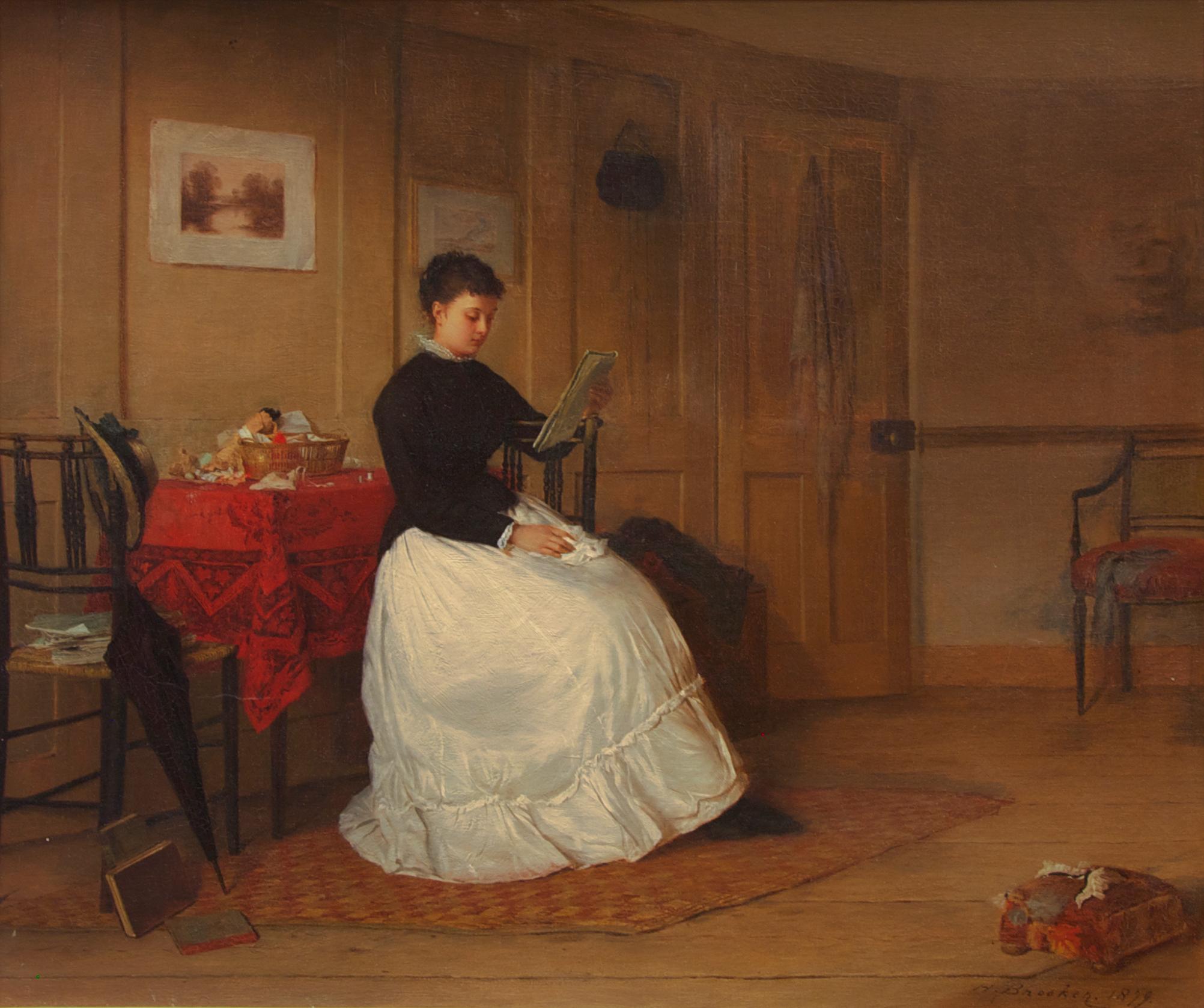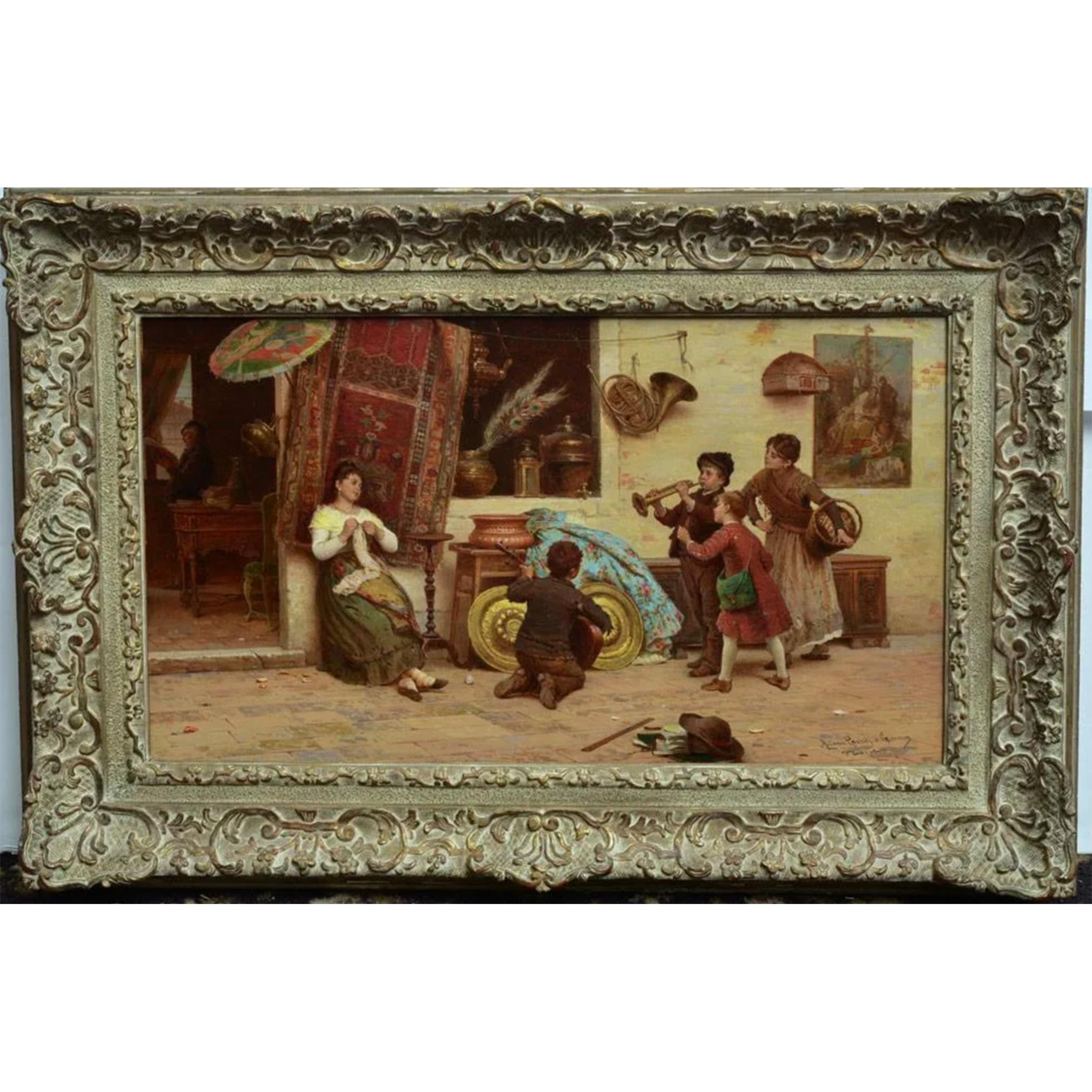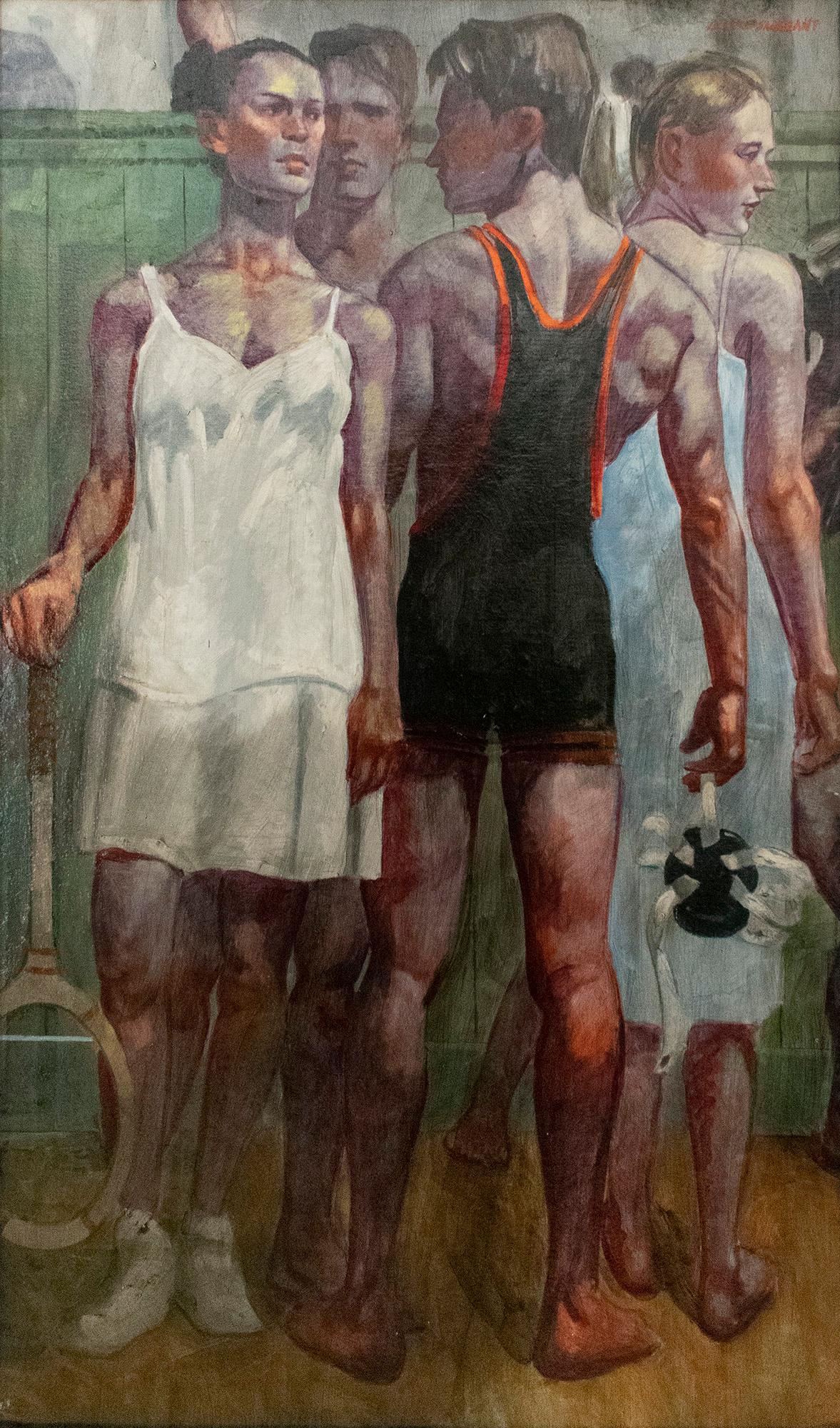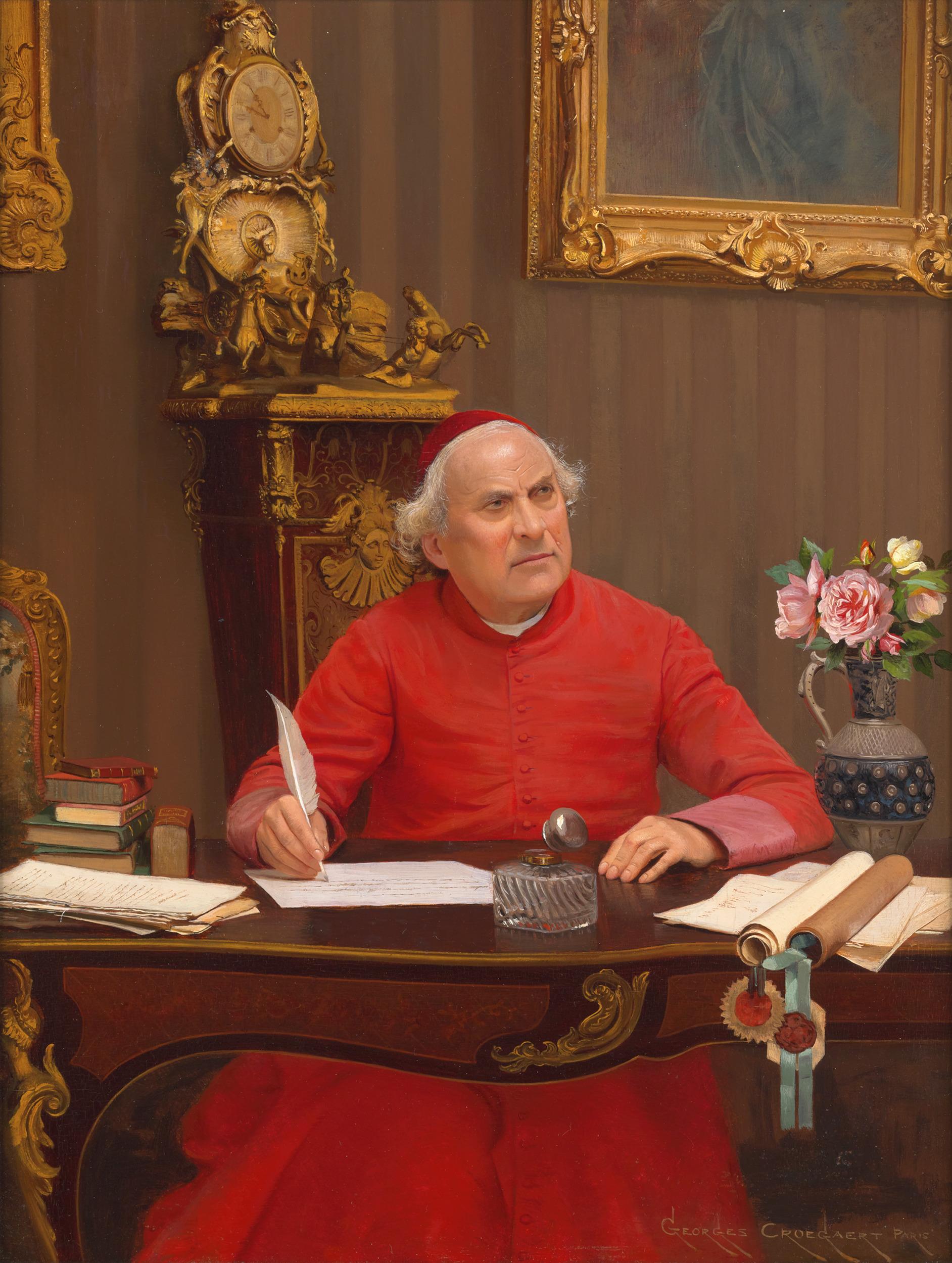Items Similar to Mother and Child
Want more images or videos?
Request additional images or videos from the seller
1 of 10
Alexandre de ValentiniMother and Child1842
1842
About the Item
Beautiful original painting by French artist, Alexandre de Valentini (1787-1887). Pencil and gouache on paper, 14 x 18.5 inches; 19 x 23.5 inches matted. Signed and dated with Paris as location. Paper is toned with age as is consistent with all Valentini examples. Vintage matting. Unframed.
- Creator:Alexandre de Valentini (1787 - 1887, French)
- Creation Year:1842
- Dimensions:Height: 23 in (58.42 cm)Width: 19 in (48.26 cm)
- Medium:
- Movement & Style:
- Period:
- Condition:
- Gallery Location:Wilton Manors, FL
- Reference Number:1stDibs: LU245210307602
About the Seller
4.9
Gold Seller
These expertly vetted sellers are highly rated and consistently exceed customer expectations.
Established in 2007
1stDibs seller since 2015
329 sales on 1stDibs
Typical response time: 1 hour
- ShippingRetrieving quote...Ships From: Wilton Manors, FL
- Return PolicyA return for this item may be initiated within 7 days of delivery.
More From This SellerView All
- Same Old Story (Brooklyn Dodgers & St. Louis Cardinals Illustration)Located in Wilton Manors, FLBill Crawford (1913-1982). Original illustration artwork depicting teams as they advance to the World Series. Depicted are representations of the St. Louis Cardinals and The Brooklyn...Category
1940s Realist Figurative Paintings
MaterialsPaper, Charcoal, Ink, Gouache, Pencil
- Nude WomanLocated in Wilton Manors, FLBeautiful female nude in profile. European, ca. 1920-30. Oil on canvas, 31.5 x 35.75 inches; 35.5 x 39.75 inches framed. Sign indistinctly upper right. A few areas of paint loss (v...Category
Early 20th Century Academic Nude Paintings
MaterialsOil
- Coronel Retirado y Su Amante Esposa (Cuban Artist)By Felipe OrlandoLocated in Wilton Manors, FLFelipe Orlando (Cuban-Mexican, 1911-2001). Coronel Retirado y su Amante Esposa, ca. 1970. Ink and gouache on paper with heavily built up layers of textured ground. Measures 13 1/4 x 18 3/8 inches. Signed lower left. Original label affixed on verso. Excellent condition. Unframed. An anthropologist as well as a painter and engraver, Orlando, whose full name was Felipe Orlando Garcia Murciano, studied at the University of Havana and at the painting workshop of Jorge Arche and Víctor Manuel. He was a founding member of the Asociación de Pintores y Escultores de Cuba (APEC) and a professor at the Universidad de las Américas and the Universidad Nacional Autónoma de México, both in Mexico City. His style is influenced by the Afro-Cuban movement and pre-columbian art...Category
1970s Abstract Abstract Paintings
MaterialsInk, Gouache
- Sailors at Cafe du GlobeBy Charles RocherLocated in Wilton Manors, FLCharles Rocher (1890-1962. Sailors, ca. 1920s. Gouache on paper. Sheet measures 19 x 25 inches. Considerable damage and loss as depicted. Signed lower left.Category
1920s Realist Figurative Paintings
MaterialsGouache
- Life Magazine Art Deco Showgirls CartoonLocated in Wilton Manors, FLBarbara Shermund (1899-1978). Showgirls Cartoon for Life Magazine, 1934. Ink, watercolor and gouache on heavy illustration paper, matting window measures 16.5 x 13 inches; sheet measures 19 x 15 inches; Matting panel measures 20 x 23 inches. Signed lower right. Very good condition with discoloration and toning in margins. Unframed. Provenance: Ethel Maud Mott Herman, artist (1883-1984), West Orange NJ. For two decades, she drew almost 600 cartoons for The New Yorker with female characters that commented on life with wit, intelligence and irony. In the mid-1920s, Harold Ross, the founder of a new magazine called The New Yorker, was looking for cartoonists who could create sardonic, highbrow illustrations accompanied by witty captions that would function as social critiques. He found that talent in Barbara Shermund. For about two decades, until the 1940s, Shermund helped Ross and his first art editor, Rea Irvin, realize their vision by contributing almost 600 cartoons and sassy captions with a fresh, feminist voice. Her cartoons commented on life with wit, intelligence and irony, using female characters who critiqued the patriarchy and celebrated speakeasies, cafes, spunky women and leisure. They spoke directly to flapper women of the era who defied convention with a new sense of political, social and economic independence. “Shermund’s women spoke their minds about sex, marriage and society; smoked cigarettes and drank; and poked fun at everything in an era when it was not common to see young women doing so,” Caitlin A. McGurk wrote in 2020 for the Art Students League. In one Shermund cartoon, published in The New Yorker in 1928, two forlorn women sit and chat on couches. “Yeah,” one says, “I guess the best thing to do is to just get married and forget about love.” “While for many, the idea of a New Yorker cartoon conjures a highbrow, dry non sequitur — often more alienating than familiar — Shermund’s cartoons are the antithesis,” wrote McGurk, who is an associate curator and assistant professor at Ohio State University’s Billy Ireland Cartoon Library & Museum. “They are about human nature, relationships, youth and age.” (McGurk is writing a book about Shermund. And yet by the 1940s and ’50s, as America’s postwar focus shifted to domestic life, Shermund’s feminist voice and cool critique of society fell out of vogue. Her last cartoon appeared in The New Yorker in 1944, and much of her life and career after that remains unclear. No major newspaper wrote about her death in 1978 — The New York Times was on strike then, along with The Daily News and The New York Post — and her ashes sat in a New Jersey funeral home...Category
1930s Art Deco Figurative Paintings
MaterialsInk, Gouache
- Fancy Department Store Satirical CartoonLocated in Wilton Manors, FLBarbara Shermund (1899-1978). Fancy Department Store Satirical Cartoon, ca. 1930's. Ink, watercolor and gouache on heavy illustration paper, panel measures 19 x 15 inches. Signed lower right. Very good condition. Unframed. Provenance: Ethel Maud Mott Herman, artist (1883-1984), West Orange NJ. For two decades, she drew almost 600 cartoons for The New Yorker with female characters that commented on life with wit, intelligence and irony. In the mid-1920s, Harold Ross, the founder of a new magazine called The New Yorker, was looking for cartoonists who could create sardonic, highbrow illustrations accompanied by witty captions that would function as social critiques. He found that talent in Barbara Shermund. For about two decades, until the 1940s, Shermund helped Ross and his first art editor, Rea Irvin, realize their vision by contributing almost 600 cartoons and sassy captions with a fresh, feminist voice. Her cartoons commented on life with wit, intelligence and irony, using female characters who critiqued the patriarchy and celebrated speakeasies, cafes, spunky women and leisure. They spoke directly to flapper women of the era who defied convention with a new sense of political, social and economic independence. “Shermund’s women spoke their minds about sex, marriage and society; smoked cigarettes and drank; and poked fun at everything in an era when it was not common to see young women doing so,” Caitlin A. McGurk wrote in 2020 for the Art Students League. In one Shermund cartoon, published in The New Yorker in 1928, two forlorn women sit and chat on couches. “Yeah,” one says, “I guess the best thing to do is to just get married and forget about love.” “While for many, the idea of a New Yorker cartoon conjures a highbrow, dry non sequitur — often more alienating than familiar — Shermund’s cartoons are the antithesis,” wrote McGurk, who is an associate curator and assistant professor at Ohio State University’s Billy Ireland Cartoon Library & Museum. “They are about human nature, relationships, youth and age.” (McGurk is writing a book about Shermund. And yet by the 1940s and ’50s, as America’s postwar focus shifted to domestic life, Shermund’s feminist voice and cool critique of society fell out of vogue. Her last cartoon appeared in The New Yorker in 1944, and much of her life and career after that remains unclear. No major newspaper wrote about her death in 1978 — The New York Times was on strike then, along with The Daily News and The New York Post — and her ashes sat in a New Jersey funeral home...Category
1930s Realist Figurative Paintings
MaterialsInk, Gouache
You May Also Like
- The Treasured VolumeBy Harry BrookerLocated in Washington, DCSigned and dated '1879' lower right Exhibited: Royal Society of British Artists, London, 1880Category
1870s Academic Figurative Paintings
MaterialsCanvas, Oil
- Feeding the YoungBy Edmund AdlerLocated in Washington, DCA rural interior scene by Austrian artist Edmund Adler. The scene is typical of Adler's paintings of Austrian culture and rural life. It is full of gemütlichkeit.Category
1930s Academic Interior Paintings
MaterialsCanvas, Oil
- The Musical Performance oil on panel by Antonio Ermolao PaolettiLocated in New York, NYThe Musical Performance by Antonio Ermolao Paoletti An italian genre painting showcasing two boys playing a trumpet and a guitar for their sist...Category
19th Century Academic Figurative Paintings
MaterialsWood Panel, Oil, Board
- Tennis Whites & Wrestling Singlet (Figurative Oil of Athletes by Mark Beard)By Mark BeardLocated in Hudson, NYAcademic style figurative oil painting of a young, female tennis player and young male athlete dressed in a wrestling singlet by Mark Beard (aka Bruc...Category
Early 2000s Academic Figurative Paintings
MaterialsCanvas, Oil
- A Mandolin ConcertBy Andrea LandiniLocated in New Orleans, LAAndrea Landini 1847-1935 Italian A Mandolin Concert Signed “A. Landini” (lower right) Oil on canvas A cardinal delights in a musical performance in this painting by Italian Card...Category
19th Century Academic Figurative Paintings
MaterialsCanvas, Oil
- The Letter By Georges CroegaertBy Georges CroegaertLocated in New Orleans, LAGeorges Croegaert 1848-1923 Belgian The Letter Signed "Georges Croegaert Paris" (lower right) Oil on panel A cardinal pauses while composing a letter in this oil on panel by Belg...Category
Late 19th Century Academic Figurative Paintings
MaterialsOil, Panel
Recently Viewed
View AllMore Ways To Browse
French Antique Interior
Antique French Interiors
Mother With Child
Mother Child Art
Mother And Child Art
Mother Child Painting
Antique Mother Painting
Mother And Child Signed
Mother And Child Paintings
Antique French Interior Paintings
Mother And Child French
Mother And Child Antique
Interior Painting 19 Century
Antique Painting Mother And Child
Alexandre De Paris
Mother And Child Mid Century
Mid Century Mother And Child Art
Mother And Child Painting 19th





